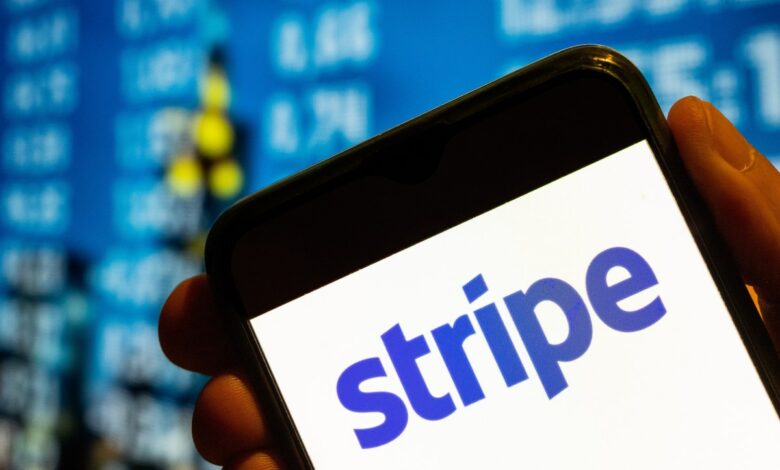Stripe’s growth continues to impress as total payment volume tops $1 trillion

Stripe’s annual letter provides the outline of a business that is healthy and growing. Stripe is sufficiently large that when we consider its growth, we have to weigh it against the overall growth in the payment space more generally. By that measure, the company is outperforming its market.
Major growth points
Stripe notes that it crossed the $1 trillion total payment volume metric in 2023, a figure that is large and round, if imprecise. Certainly the threshold is notable, but when paired with recent growth figures, it becomes all the more impressive. In 2023, its payment volume rose 25%, according to the letter. If the company did in fact process precisely $1 trillion last year, it would imply $800 billion in 2022 processing, and gains of $200 billion worth of TPV in a single year. At Stripe’s size, it’s quite a result.
Stripe’s fee structure starts at 2.9% with an added 30-cent charge for domestic card-based transactions. This implies that even when accounting for volume discounts, its added payment volume last year equaled massive new revenues for the private company.
Those revenues are translating into cash flow, an all-important metric for investors. The company says in the letter that it was “robustly cash flow positive in 2023 and expects to be again in 2024,” which means it likely doesn’t need to raise more capital before it goes public. That may be part of the reason why it is not pursuing a near-term IPO: Public offerings are fundraising mechanisms, and Stripe is currently kicking off cash.
Two other data points stood out.
There are now 100 companies that use its service that are processing $1 billion or more per year with Stripe. Those companies make up about 10% of its total payment volume, implying some customer concentration — a concern for some investors, although it doesn’t trip our risk radar — but more importantly it means that Stripe is managing to hold on to large accounts over time. Any company processing that much total payment volume through Stripe could decide to build an in-house stack or pursue a more DIY option. The fact that so many big accounts are sticking with Stripe, though, shows that customers will not necessarily “graduate” from its offered payment services. This bodes well for future growth and revenue stability.
Also, the offerings that fall into its “Revenue and Finance Automation” bucket are expected to reach a $500 million annual run rate this year — those are tools that help businesses manage billing, tax and revenue recognition. That run rate would be sufficient for that business unit to be a publicly traded company in its own right. This gives Stripe not only a massive scaled operation on the payments side, but also a software story to tell apart from that core operation. Revenue diversity that unlocks quickly growing, potentially high-margin revenue is investor catnip. Expect that theme to arise when Stripe eventually files to go public.
Surprising startup success
We continue to see venture capital funding at its lowest levels. However, Stripe says that’s not deterring people from creating new companies. It actually saw record startup formation in 2023. The U.S. is leading there, but there have also been strides in Canada, the Netherlands and Sweden, according to the company.
These startups are finding success even without VC backing. For example, Stripe says that startups founded in 2022 (the most recent full year of data it had) were 60% more likely to start collecting revenue within their first year, while 57% were more likely to process $1 million within their first year than those founded in 2019.
That’s pretty impressive considering 2023 started with some folks saying that predictors for startup success in that year were going to come down to more frequently reevaluating budgets and plans and a path to break-even.
Stripe also toots its own horn when it notes that one in six new Delaware corporations incorporates with Stripe Atlas. Among those, more than 50,000 were working toward earning $5 billion a year in revenue.
The future
Overall, it’s been an interesting year for Stripe, now valued at $65 billion. As much as we are anticipating a Stripe initial public offering soon, that’s not likely to come for at least another year.
It made a rather unorthodox acquisition of Okay, a startup that developed a low-code analytics software to help engineering leaders better understand how their teams are performing. Of which, TechCrunch’s Mary Ann Azevedo wrote, “Stripe deciding to acquire a startup that helps engineering leaders build performance dashboards to gauge how their teams are doing feels like the company is very serious about making sure its own engineering team is working effectively enough to not only move faster, but also be more productive.”
“Relationship” was also a big theme throughout the letter. The company provides ample examples of how it continues to roll out services to help companies build closer relationships with their customers and improve the overall payments experience.
In addition, Stripe continues to say that the company is still early in its journey. It aims “to be the most reliable part of a business’s stack.” That is a lofty goal, but its growth so far indicates that customers are finding that it’s sufficiently executing on that goal.
Source link




